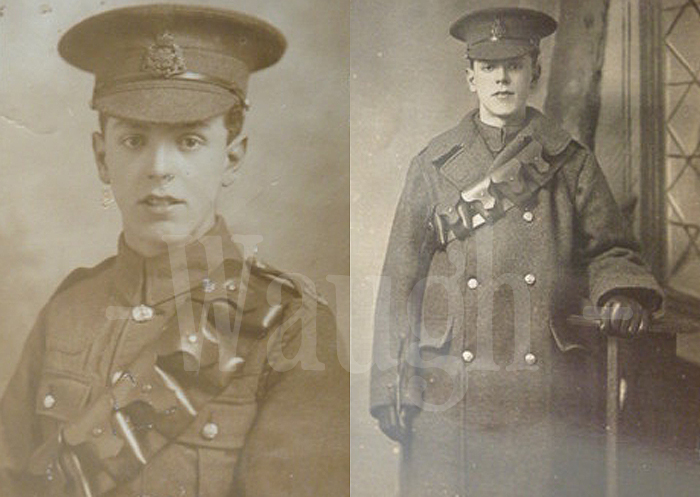Western Times – Friday 06 December 1940
This news article provides an interesting snapshot of wartime Britain, revealing how the upheaval of daily life affected young people. It offers a glimpse into the juvenile justice system of the time and the community’s efforts to address and correct youth crime amid the broader backdrop of World War II.
EPIDEMIC OF THEFTS BY CHILDREN
Eight Evacuees Among Offenders At Newton Abbot

Eight evacuee boys, a local youth, and a girl were involved in larceny charges heard at the Newton Abbot Juvenile Court last Friday; the cases being the sequel to an epidemic of petty thefts during the past few months.
Theft of bicycles, clothing, wire netting, cash from foster parents and from a church collecting box, hammers, a bicycle lamp, and chocolate and sweets were alleged to have been made by the youngsters, whose ages ranged from 11 to 14.
Evidence was given in one charge against an evacuee and the local boy by a child of six years, who was stated to have been sent by his grandmother to deliver an order for 7s. 6d. in payment at Newton Abbot Co-operative Stores.
“I was walking along the street,” said the child, “when two boys stopped me and took me to an air raid shelter after they had seen what I had in my bag. They then took the 7s. 6d. and told me that they were going to buy me an aeroplane.”
Inspector Burgess said that when interviewed by Detective-Constable Abrahams, the evacuee made a statement alleging that the money was taken by the local boy, who, however, denied having been associated with the theft.
To the Bench, the local boy maintained that at the time he was at school, and the case against him was dismissed.
Further charges against the same evacuee referred to the theft of 5s. from St Paul’s Church, Newton Abbot, and a hammer and silver umbrella handle from Forde Park School cricket pavilion. Inspector Burgess stated that in the course of interrogation the boy admitted that one day, after leaving school, he went to the church “to see what he could get.” He took some money from a collecting box and on a later occasion he paid another visit, when he picked up 5s. from a table in the church.
CHAIRMAN’S WARNING
“You will get into a life of crime if you go on like you have been, and therefore we are sending you to an approved school,” the Chairman (Col. P. Carew) told the boy.
A similar course was taken with an 11-year-old boy who admitted stealing wire netting, valued at 7s. 6d., which, it was stated, he took with the idea of making a pen for a young rabbit he had obtained, and a bicycle belonging to a schoolmate. This boy asked for the thefts, including an artist’s outfit, valued at £3 10s., which was alleged to have been stolen from a caravan, to be taken into consideration.
The girl, aged 14, was alleged to have stolen a green coat, pixie hat, and gloves, valued at £2 4s. 6d., belonging to Marion Steer, of Broadlands-avenue, Newton Abbot, at a dance. It was stated that the girl was seen wearing the clothes some time afterwards. The coat had been lengthened and altered to fit her.
The Bench decided to place the girl on probation for three years, on condition that she entered a Salvation Army Home.
Two other evacuees, involved in the theft of money from foster parents, a bicycle lamp, and sweets from local stores, were also sent to an approved school, and the remainder were bound over and placed under the supervision of the Probation Officer.
Analysis and Explanation
This newspaper article from the Western Times (6th December 1940) details a series of petty thefts in Newton Abbot involving evacuee children during World War II. The article reveals an “epidemic” of larcenies, painting a picture of a local juvenile crime wave.
- Context:
During the Second World War, many children were evacuated from urban areas to the countryside to protect them from bombing raids. Newton Abbot, a rural town, hosted several evacuees who became involved in a spree of minor thefts. The disruption of family life and the pressures of war likely contributed to the increased mischief and delinquency. - Crimes Committed:
The children involved were accused of various petty thefts, including stealing bicycles, clothing, money from churches, hammers, sweets, and personal items. The offenders were both local youths and evacuees, aged between 11 and 14. - Key Incidents:
- A six-year-old child gave evidence of being robbed by two boys who tricked him into an air raid shelter.
- One boy admitted to stealing from St. Paul’s Church and the cricket pavilion at Forde Park School, showing a premeditated intent to steal.
- An 11-year-old boy stole wire netting to make a rabbit pen and a bicycle from a schoolmate, showing an element of misguided innocence in his actions.
- A 14-year-old girl was involved in the theft of clothing from a dance, which she altered to fit herself, indicating a more deliberate attempt to keep the stolen goods.
- Court Actions:
- The court took a stern approach, sending several of the offenders to “approved schools,” institutions for young people with behavioural problems, as a form of correction.
- The girl was placed on probation for three years under the condition that she entered a Salvation Army Home, showing a more lenient but still corrective measure.
- The local boy, accused by another child, was acquitted as he provided an alibi of being at school at the time of the incident.
- Chairman’s Remarks:
The Chairman of the Bench, Colonel P. Carew, issued a warning about the potential for a “life of crime” if the behaviour continued, reflecting the moral and legal stance of the time towards juvenile delinquency. - Social Commentary:
The article highlights the social challenges during the war, particularly regarding the evacuation of children. Removed from their familiar environment, evacuees might have struggled with the new circumstances, contributing to their delinquent behaviour. The response from the authorities, involving approved schools and probation, suggests an attempt to reform rather than simply punish.




